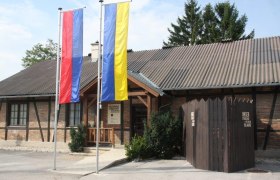Aderklaa
The small Marchfeld municipality of Aderklaa invites you to enjoy a relaxing vacation or excursion in the Weinviertel. Only around 15 kilometers separate it from the district capital of Gänserndorf. The family-friendly village covers an area of nine square kilometers.
The current municipal area was already inhabited in the Neolithic, Bronze Age and Hallstatt periods, as historical finds prove. The village was first mentioned in a document in 1258. The layout that has been preserved to this day dates back to the medieval foundation. Aderklaa Angerndorf is still laid out in the form of a fortified farming village: In ancient times, this closed form offered the inhabitants protection - and could be well defended at the same time. In July 1809, Aderklaa was one of the sites of the Battle of Wagram. On the occasion of a 200-year commemoration, the municipality received the coat of arms from the state of Lower Austria in 2009.
Aderklaa: fertile asparagus village in the Marchfeld region
Aderklaa is home to over 20 farms. Grain, beets, corn and rapeseed are produced, as well as carrots, potatoes, soybeans - and asparagus. This makes the municipality one of the most important asparagus villages in the Marchfeld region.
Grazing cows, pigs and horses are also part of the natural landscape: livestock farming has been practiced in the village again since 1994 - with suckler cow husbandry and happy pigs. The local riding stables are also well-known, one of which also works with therapy horses.
Cozy farms invite excursionists to take a break. A special tip for families is the Tirolerstuben - with a beautiful garden and its own playground.
Church of Our Lady of Sorrows in Aderklaa
The Roman Catholic Church of Our Lady of Sorrows is a sacred sight. In the early 1960s, the existing church was replaced by a modern church - with Christological concrete reliefs by sculptor Fritz Tiefenthaler and 14 stained glass windows painted by Josef Mikl. The organ was built in 1967 by organ builder Rudolf Novak.


